Dan Burke under the Neon Palm, circa 2001. Photo: Peter Power / Toronto Star.
Article originally published August 10, 2012 by The Grid online (thegridto.com).
The legendary Spadina venue has just been sold for a reported $3 million, with its new owners promising to return the club to its late-‘70s glory days. But in this edition of her nightlife-history series, Denise Benson looks back at the people and parties that kept this Toronto landmark alive during its leanest years.
BY: DENISE BENSON
Club: The El Mocambo Tavern, 464 Spadina Ave.
Years in operation: 1946-present. Here, I focus specifically on the era spanning 1989-2001.
History: Arguably Toronto’s most illustrious live music venue, Spadina’s historic El Mocambo Tavern has meant many things to many people over the past 66 years: soul and blues hub, revered rock and roots venue, queer-punk hotbed. The building itself is said to date back to 1850, and to have acted as a haven for escaped slaves in a part of the city that was long home to a sizable African-Canadian community.
The El Mocambo, complete with infamous palm-tree sign, opened in the 1940s as a two-floor live music venue, and was granted one of Toronto’s earliest liquor licences. While it’s never been fancy, the El Mo boasts an incredible rock, soul, jazz, and blues pedigree. Charles Mingus, Muddy Waters, Willie Dixon, Jimi Hendrix, Stevie Ray Vaughan, The Guess Who, Elvis Costello, Lou Reed, U2, Blondie, and The Ramones all played there, as did a certain British band that performed two nights under the pseudonym of The Cockroaches.
“The Rolling Stones’ shows in 1977 put The El Mocambo on the ‘world stage,’” says longtime local music booker Enzo Petrungaro, who co-owned the venue from 1989 to 1992.
“It was probably the most talked-about club in the world during the days that followed, not only because of the scandals—the Prime Minister’s newly separated wife seen running around with the band, and Keith Richards’ subsequent bust at the hotel—but it was the first time in many years that The Stones played such an intimate venue. And they were stellar performances!”
Stones fans know that the shows resulted in side three of the band’s Love You Live album. In the years that followed, the El Mo was at times considered a coveted, A-list club and, at other points, a shoddy spot to be avoided—a perception largely contingent on who owned it at the time.
Look past the club’s “glory years” of 1972 through the mid-’80s—when owners Michael Baird and Tom Kristenbrun worked mainly with in-house booker David Bluestein—and you’ll find a long list of subsequent owners and operators, some lasting less than a year.
In light of the recent sale of both the El Mocambo Tavern’s building and business to Sam Grosso (owner of Cadillac Lounge) and Marco Petrucci (of 99 Sudbury), we examine a crucial turning point in the club’s history: the period of 1989 through 2001.
These transformative, albeit tumultuous, 12 years begin with the El Mo’s purchase by Petrungaro and end with its sale to Abbas Jahangiri. In between, there were successful stretches, many colourful characters, and a number of sudden closures.
Why 1989-2001 were important years at The El Mocambo: Encouraged by earlier El Mo owner Shaun Pilot, Enzo Petrungaro and a silent partner bought into the business at a point when the crowds weren’t coming. They began with widespread renovations.
“We immediately moved the stage [from the east side] back to the middle of the room upstairs, then gutted and rebuilt the dressing rooms, washrooms, kitchen and offices,” recalls Petrungaro. “We tore down and rebuilt all the bars, complete with new draft lines and pumps, installed new flooring, central air conditioning, exposed all of the bricks, and thoroughly cleaned and painted the entire space.
“We also built the staircase to the second floor at the back because the original one was condemned. This is where the bands would load-in their equipment. The renovations were extensive, expensive, and very necessary. Once we opened, the music was all that mattered.”
As a talent booker, Petrungaro didn’t limit the El Mocambo to specific sounds. He credits Pilot and industry veteran Joe Bamford with helping to fill the calendar in his early days, with local promoters and bands soon taking interest.
“We installed a great-sounding PA system upstairs, and a similar, scaled-down version for the ground floor. In spite of all the challenges and complaints with the building—the load-ins were a struggle, there were too many stairs to get to a dressing room with no private washroom, and you had to walk through the crowd to get to the stage—artists still loved performing there. The stage sounded great, the room sounded great, and the seating virtually enveloped the stage, creating a very unique and intimate experience not only for fans, but also for the artists.”
Petrungaro booked a number of respected artists in for weekly residencies, with acts like Danny Marks, Paul James, and Jack de Keyzer repping on the rock and blues front, while the-then-unknown Barenaked Ladies hosted their Barenaked Circus. Popular Front would also transform into The Lowest of the Low during their El Mo run. Arlene Bishop, Ron Sexsmith, Johnny Lovesin, and Alix Anthony all hosted residencies too, and an all-ages Saturday matinee-cum-jamboree with Melody Ranch proved popular.
This three-year period could be thought of as a second set of “glory days,” as Petrungaro and his partner made a viable go of it. Back then, up ‘n’ comers like Amanda Marshall, The Holly Cole Trio, Bourbon Tabernacle Choir, and Leslie Spit Treeo were booked regularly, alongside touring acts that ranged from blues/soul artists Rory Gallagher and James Cotton to folkies Fairport Convention and Sylvia Tyson, from alt-rockers The Feelies and Dead Milkmen to iconic industrial act KMFDM.
Petrungaro has a number of El Mocambo shows from this era that he still considers personal favourites, among them “Pere Ubu; Buddy Guy, because afterwards he said it was one of his favourite stages to play in the world; Dr. John, because my late brother Sam was a huge fan and got to meet him and walk him to the stage; and Gonzalo Rubalcaba with Charlie Haden and Jack DeJohnette, because it was a super show from an extreme super-group. The Tom Robinson Band put on a great show, but it was also memorable because Rob Halford came in after his Judas Priest show at Maple Leaf Gardens and sat to watch from my table.”
Although they raised The El Mocambo’s profile and popularity, Petrungaro and his partner handed over the keys in 1992 when the building’s landlord requested a big rent increase. Petrungaro went on to book The Opera House for five years and has been the General Manager and booker at The Phoenix since 1997.
“In my opinion, Enzo and [his partner] were the last ‘great’ owners of the venue—it’s been a free-for-all since they closed,” states local concert-industry veteran Jeff Cohen. Cohen himself worked as an El Mo booker twice before going on to co-own Horseshoe Tavern, Lee’s Palace, Collective Concerts, and other businesses.
“When I was hired by Tom, the next owner [Editor's note: not to be confused with Tom Kristenbrun], in 1993 or so, my interest was to revive the venue to where they’d had it,” Cohen says. “I got the best of the local alterna-bands, like The Rheostatics, Bourbon Tabernacle Choir, The Waltons, and Furnaceface to play there weekends, and filled the mid-week with touring blues and roots music acts. On the first floor, we went no-cover and developed local acts like Headstones, Days of You, and The Mahones.
“I had the venue rocking during my first tenure as the talent buyer but, after two years, Tom fired me, saying he felt he could book it as well as me. Eight months later, the club went bankrupt.”
Cohen did another stint of booking for a new set of owners at The El Mocambo in 1996, but remained for less than a year before heading to the Horseshoe.
Musician William New also worked to keep the El Mo afloat during the turmoil of the mid-1990s. The Groovy Religion vocalist and main man behind three-decade-strong indie showcase Elvis Monday had already booked clubs including the original Drake Hotel and The Edgewater before coming to amp up the El Mocambo for five years, beginning in 1993.
His job was to fill both floors of the club seven nights per week, an impossible task as owners came and went.
“During the time that I was booking, I worked for five different situations of ownership, including a couple of landlord-in-possessions,” explains New. “What would happen is someone would disappear in the middle of the night; I’d come to work and there would be a padlock on the door. Then the landlord would want to keep it open while he would look for a buyer so he would get in touch with me and say, ‘Just keep going. Business as usual.’
First there was the Tom to whom Jeff Cohen referred.
“He told me his name was Tom Ancaster, but that was just the name he worked under,” offers New, who also says that Ancaster simply “disappeared.” [Note: in a comment posted November 26, 2012, in response to the original publication of this article, Ancaster states that his tenure at the El Mo ran from September 1991 to January 1995. He also disputes Cohen's claim that he was fired. See Ancaster's full comment below.]
Next, New recalls that a group of El Mocambo staff members, including soundman Courtney Ross, ran the club for the better part of a year, from 1995 into 1996, before the landlord repossessed and later sold the club to Lamin Dibba and Jim Eng.
New worked for them all, booking in various weeklies over the years, including his own Elvis Monday; John Borra and Frank Nevada’s acoustic Tune Saloon on Tuesdays; the infamous Tribute Wednesdays; and Sedated Sundays, a psychedelic night helmed by Steve Bromstein of Poppyseed & Love Explosion Orchestra.
“I was trying to do an indie-rock and alternative kind of thing, just because that’s all I knew,” says New of his programming focus. “I didn’t know what cover bands or R&B bands were good, despite the fact that the El Mocambo had a long history of doing those types of things. I just booked it as an extension of what I’d been doing at The Drake and Edgewater, and with my Elvis Mondays at various venues. More or less punk rock and edgy alternative stuff.”
New fondly recalls shows by the likes of Pete Best (The Beatles’ original drummer), Steve Hackett (ex-Genesis), and Alex Chilton. His years of Mondays were also celebrated with the 1994 release of Elvis Mondays Vol. 1 on Kinetic Records. Elvis Monday later returned to The Drake Hotel (post-2004 renovation), where they continue to this day.
By June of 1998, The El Mocambo was once again run down and losing patrons. To reverse its fortunes, owners Lamin Dibba and Jim Eng hired passionate, polarizing ex-Montrealer Dan Burke to book their club.
“When I first came to Toronto in November 1977 and listened to CFNY, Q-107 and CHUM FM, I’d always hear, ‘Tonight, under the Neon Palm!’” Burke begins. “When I started booking the club, it was on the doorstep of the glue factory. No concert promoters put shows there. The Neon Palm was an unlit, rusted eyesore. The plug was pretty close to being pulled on what I thought was a fabulous cultural landmark.”
Never known to shy away from a dingy rock bar or a challenge, Burke dug in. He’d spent the year before booking the short-lived Club Shanghai down the street, and had proved to be prescient in his taste. Burke promoted some of the first Toronto appearances by bands including The White Stripes, The Brian Jonestown Massacre, and Montreal’s Tricky Woo.
“I’d quickly learned that, as a new player in the field, I had to tap into acts, labels, and booking agents that weren’t already sewn up by established competitors,” Burke writes in an email interview. “So that’s what I did—and very deeply so—once I was at The El Mocambo. Whatever was cutting-edge—The Toilet Boys from N.Y.C., stoner rock acts from Man’s Ruin Records, nerd heroes like Wesley Willis, electroclash ensembles like Chicks on Speed, Japan’s Zoobombs and The 5,6,7,8s, Montreal’s The Dears—I got the best of them, and made the El Mocambo an important international club again.”
The Deadly Snakes, The Sadies (sometimes with R&B legend Andre Williams), Danko Jones, Sum 41, and Peaches were among the local favourites booked by Burke. He was also responsible for repeat visits by Japanese noise rockers Zoobombs, who recorded their album, Bomb You Live, at the El Mo in April 2000, and released it on Toronto’s Teenage USA label in 2001.
“Being a show promoter is like gambling,” says Burke. “When you win, sometimes you also get to see a great show. When you lose, sometimes you get to see a great show. It’s the greatest job in the world if you can keep going.”
Who else played/worked there: It would be impossible to list all of the key bands, DJs, bookers, and promoters who played a role in The El Mocambo’s story from 1989-2001. Along with rock and roots music, there were goth and glam shows, hip-hop showcases, and even the occasional rave. Punk band The Sinisters played numerous Halloween shows. Hip-hop supergroup Gravediggaz made its Toronto debut at the El Mo in 1994, while Canadian hip-hop icons including Choclair, Rascalz, and Kardinal Offishall introduced their “Northern Touch” collaboration in the same room a few years later.
Video: Aldo Erdic
The seeds of Hot Stepper Productions’ long-running soul-funk monthly, Bump N’ Hustle, can even be traced to 464 Spadina. BNH mastermind Carlos Mondesir got his event-production career started there in 1995 after soundman Courtney Ross “roped me into” promoting the weekly Soul Sundays.
Working with DJ Curtis Smith and tutored by Ross, Mondesir learned to book bands and produce live shows.
“It made me a far more versatile promoter, coming from a DJ-focused club world,” says Mondesir, who brought performers including k-os, Jacksoul, Medeski Martin & Wood, Arcee and Fatski, Blaxam, Jukejoint, and Camille Douglas to the El Mo’s upstairs stage.
“There was an obvious history of soul and blues at the club, but we were into an updated soul style fused with new beats. My first gigs with DJs like Paul E. Lopes, Mike Tull, Jason Palma, Vancouver’s Luke McKeehan, and Atlanta’s DJ Injex were all there, too.”
But there are two DJ-driven events that will forever be synonymous with The El Mocambo in the late 1990s through to 2001: Davy Love’s Blow Up and Will Munro’s Vaseline (later renamed Vazaleen after threats of legal action from the namesake skin-care manufacturer).
DJ/promoter Davy Love’s incredibly popular Saturday weekly was “all about British pop music from the 1960s through 2000s,” says the man himself. ”We played indie, underground, massive sellers, and the way-out stuff, too.”
Blow Up ran for more than 10 years at almost as many venues, including two stints at the El Mo. His first was in 1996; he would move the night, which drew more than 500 well-dressed, fiercely loyal followers each week, back to the venue in 1998 because he liked its new owners and vibe.
“Lamin and Jim are two of the nicest, most honest, straight-shooting guys I’ve ever dealt with in clubland,” shares Love, who also encouraged Dan Burke to come work for them.
“I also loved the venue, and its down-and-dirty history. I saw many shows there when I was a teenager. The El Mo will always be the greatest rock ‘n’ roll landmark in this city; it was the perfect place for Blow Up to thrive. It had just the right amount of seediness and rock ‘n’ roll-ness that appealed to both the pretty, rich kids who were out to rebel against their parents and the downtown working kids/art students who spent all their cash from their minimum-wage jobs on Saturday nights.”
Love was joined by DJs Duncan Rands, Adam Gorley, Johnny Culbert, and the duo of Trevor Young and Darrell Joseph a.k.a Bangers & Mash (“which was which, we never knew”). Bands, including Stars, performed live before the party got underway. Welsh band Super Furry Animals guest DJed, partied through the night (“It went on till the cleaners came in at 10 a.m. the next day”), and later asked Love to remix their 2003 single “Hello Sunshine.”
The celebs who frequented Blow Up were not limited to musicians.
“We had Will Ferrell and Janeane Garofalo dancing and drinking it up one night, and Dave Foley came many times,” spills Love. “So many famous faces were through Blow Up at the El Mo, but it was never a big deal to anyone. They were just having fun like everyone else.”
After all, the main attraction was Blow Up’s music, which blasted out of a powerful system set up for live music.
“The sound system was amazing,” Love extols. “It was a massive stack of speakers that boomed throughout the room. You could actually feel the music hit you, it was so loud.”
Meanwhile, artist Will Munro, along with a wonderfully motley crew of queers, would gather downstairs, monthly on Fridays, for Vaseline.
Dan Burke, who’d been tipped off to Munro by members of The Deadly Snakes (“they were the cornerstone of my local band alliances,” he says), gave Munro the chance to launch his queer-rock extravaganza in January of 2000.
“Will sure knew what he was doing!” exclaims Burke of the DJ/activist who lost his battle with brain cancer in May of 201o. “The first Vaseline drew over 200 people, and it soared from there. It was a fabulous experience working with Will. He was like the United Nations of gay people. What a diverse crowd.”

The Vaseline crew (clockwise from left): Tawny LeSabre, Will Munro, Bennett Jones Philips, Zoe Dodd, and John Caffery. Photo courtesy of Caffery.
“Vaseline was our fantasy event that actually materialized,” says Miss Barbrafisch, the metal-loving DJ who was a Vaseline resident from the start. “It was rockers, punks, metalheads, and misfits, weirdos of all stripes and genders. It was inherently informed by the identity politics of the ’90s, but without the anger. Vaseline was positivity and perversion and great music and great people. Once a month, the outsiders had a clubhouse.
“Vaseline was magical during the El Mo years,” she continues. “The entire historicity of the venue as a distinctly rock venue was a constant reminder that we didn’t need to compromise our musical perspectives.”
“Compromise” is a word that will never be associated with Vaseline.
“Peaches played the first Vaseline ‘Shame’ party,” recalls Kids on TV’s John Caffery, who first graced stages as a go-go dancer there, shaking it up alongside Coco LaCreme at Munro’s behest. “Peaches also played beats when Will pulled a rainbow flag out of his ass.”
That same June 200o Vaseline also featured guest DJ Miss Guy, of Toilet Boys fame. Other early guests included Vaginal Davis, Kembra Pfahler of The Voluptuous Horror of Karen Black, and Cherie Currie, a former member of The Runaways who played live in June 2001, backed by a band of Toronto musicians.
Caffery—who was also game to be involved in Vaseline “stage antics like Bobbing for Butt Plugs, Cock Sucking contests, and Drag Queen Roller Derby”—feels passionately about this night that proved so popular it outgrew the El Mo’s small downstairs room, moved upstairs, and would later go on to pack Lee’s Palace.
“Vaseline was transformative for me, and created this massive shift in the way I perceived Toronto nightlife and the queer and trans community,” he says. “I started to think of clubs as a place to be creative, fuck shit up, and challenge public norms rather than simply a place to drink with friends. It also broke down a lot of the silos I saw within the community, with the bears, punks, leather women, and goths all partying together.”
Blow Up, Vaseline, and Dan Burke’s overall programming shifted the public perception of The El Mocambo. It may have been physically worn, but new audiences meant the club was solvent again.
“By 1999, we were making money,” states Burke. “In 2000 and 2001, we were a highly viable enterprise financially.”
Burke—with the help of Love, Munro, William New and countless bands who played benefit shows—even managed to raise the $22,000 required to fix the El Mo’s landmark palm sign in 1999. It was later damaged.
What happened to it: As has been well documented, 464 Spadina Ave. was sold to Abbas Jahangiri in 2001. His vision put the brakes on the Burke-led rebirth. Burke went out with a two-floor show on November 4, 2001. He also put up a fight and was famously handcuffed and evicted by police afterwards. Burke has long since booked for The Silver Dollar and, occasionally, at The Velvet Underground.
In his 11 years of owning the El Mo, Jahangiri both nurtured and took away. Though plans to transform the upstairs into a dance studio never fully materialized, his renovations reduced the floor—once The El Mocambo’s heart—to a shadow of its former self.
Still, thanks largely to the booking efforts of Yvonne Matsell—who worked under Jahangiri’s direction for the past decade—the club did stay afloat while featuring shows in the refurbished ground-floor room by the likes of Julie Doiron, Patrick Wolf, Holy Fuck, La Roux, and People Under the Stairs. DJs were also more welcome than ever, with dozens of dance parties bringing house, funk, techno, drum ‘n’ bass and more to the two floors. Jahangiri recently decided to sell the building in order to devote his time to missionary work.
New co-owner Grosso has already made it clear that his El Mocambo will return to the rock and roots-music focus of earlier decades. He has referenced The Rolling Stones repeatedly in interviews while expressing sentiments like “we want to bring great rock ‘n’ roll back to the city.”
Grosso also raised many eyebrows by stating flatly that he won’t feature hip-hop. It’s an odd, and questionable, sentiment at a point when the influence of hip-hop is so pervasive across all contemporary music.
“I think Sam has a preference to roots-geared genres,” offers Matsell by email. “After all, he has made the Cadillac Lounge into a successful venue that gears itself to those tastes. He does know that there is some really good hip-hop out there, so perhaps his comment was more off the cuff. Time will tell.”
Matsell, who continues as the El Mo’s main talent booker, tells me that the current priorities are fixing the neon sign, adding air conditioning and proper heating, renovating the bathrooms, and more.
“The upstairs room will be changed to look like when the El Mocambo was having its heydays in the ’70s.”
The reno process is being documented by posts to The Original El Mocambo Tavern Facebook group, where band listings are also found. The El Mo is currently open for shows Thursday through Saturday. Expect a re-launch party come spring.
Although Matsell emphasizes that “I will still book local and upcoming artists; that has always been a mandate in all the years I have been booking clubs,” there is concern that Grosso may just be dwelling a little too heavily on the El Mo’s past.
“I wish Sam the very best,” offers Jeff Cohen. “His other venues are wonderful, but what that venue needs is to reach out to local promoters and book the best new bands in North America, not talk about who played there some 40 years ago. No venue today can survive without being focused on new music, lest it be an oldies club or a generic folk or blues club.”
“I would tell Sam and his partner to embrace the history of the building, but don’t dwell on it,” echoes Enzo Petrungaro. “Make some of your own!”
“Don’t limit your options—you may not have as many as you’d like,” says Mondesir.
That said, one El Mocambo alumnus is eager to return. Davy Love, now owner of The Bristol Yard restaurant, will host his 18th-annual Blow Up Holiday Party there on Dec. 15.
“I booked it the very same day I heard that Sam bought it,” he says.
Addendum: In September 2014, Grosso announced that the El Mocambo had been sold and that the club would close as a live music venue for good. On November 6, the date that the El Mo had been set to shutter its doors, a surprise announcement was made: investment maverick and Dragons’ Den star Michael Wekerle had purchased the building with the intent to keep the El Mocambo alive. He plans to renovate, and hire an experienced team to help launch the club’s new chapter.
Thank-you to Miss Barbrafisch, Carlos Mondesir, Dan Burke, Davy Love, Enzo Petrungaro, Jeff Cohen, John Caffery, William New, and Yvonne Matsell for contributing. Thanks also to Amy Hersenhoren, Dave Munro, Jonathan Ramos, and Stuart Berman.

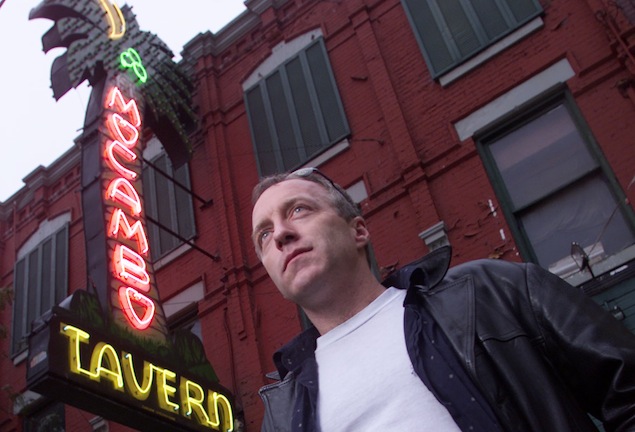
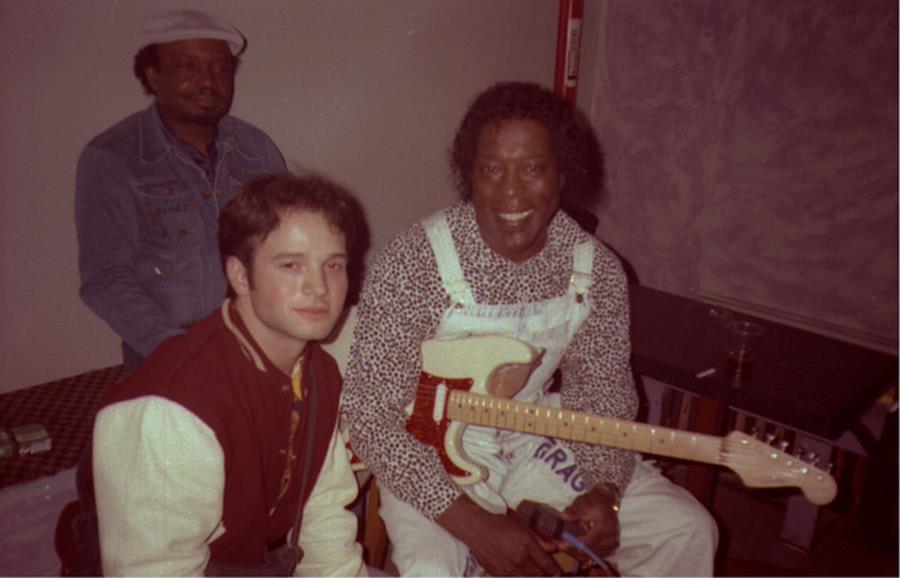
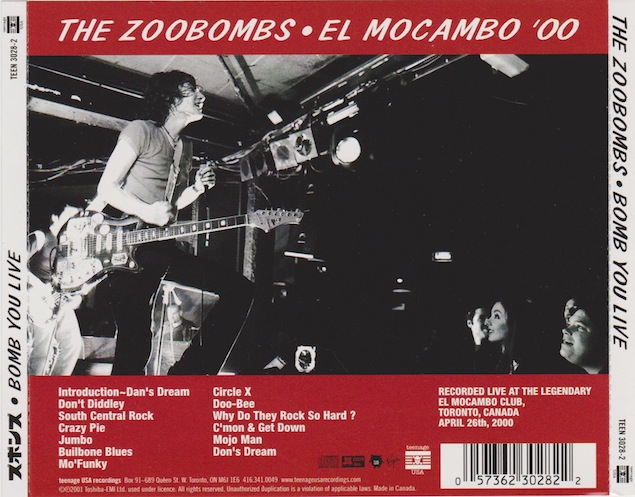
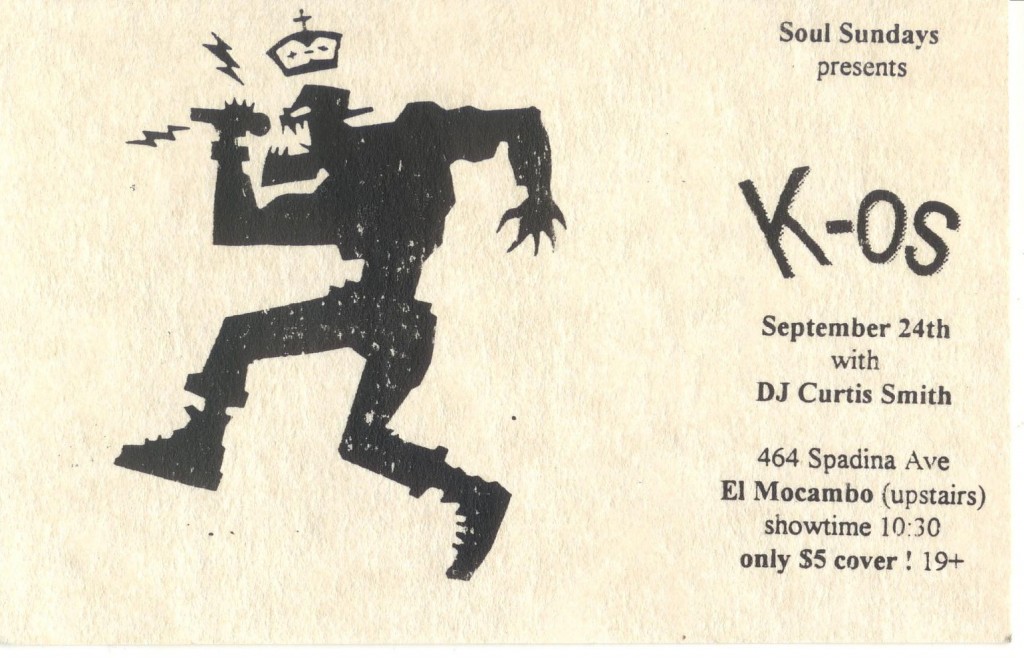
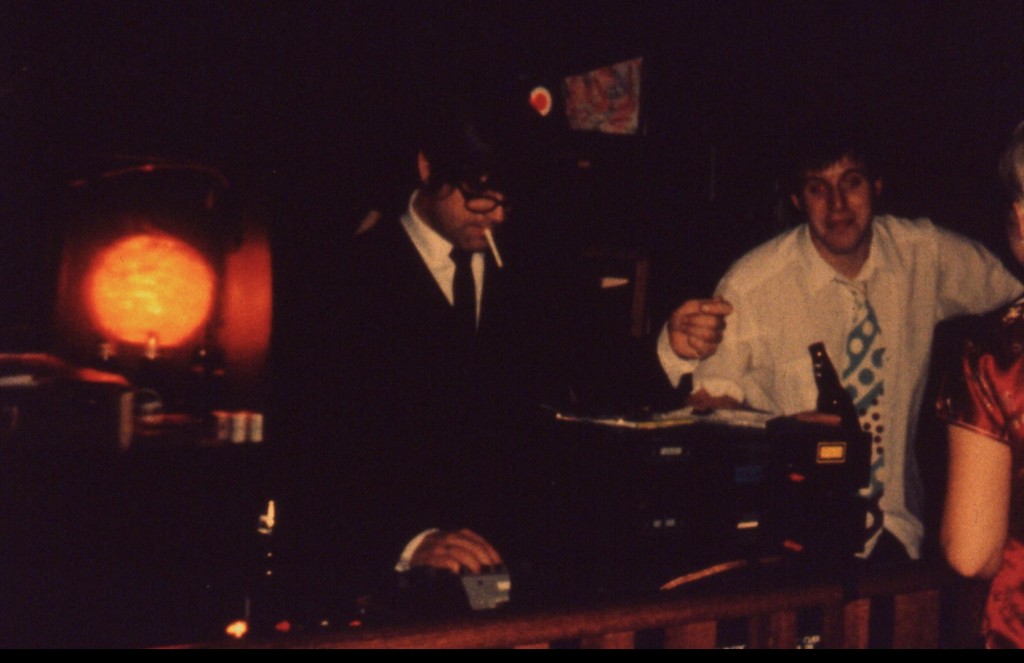
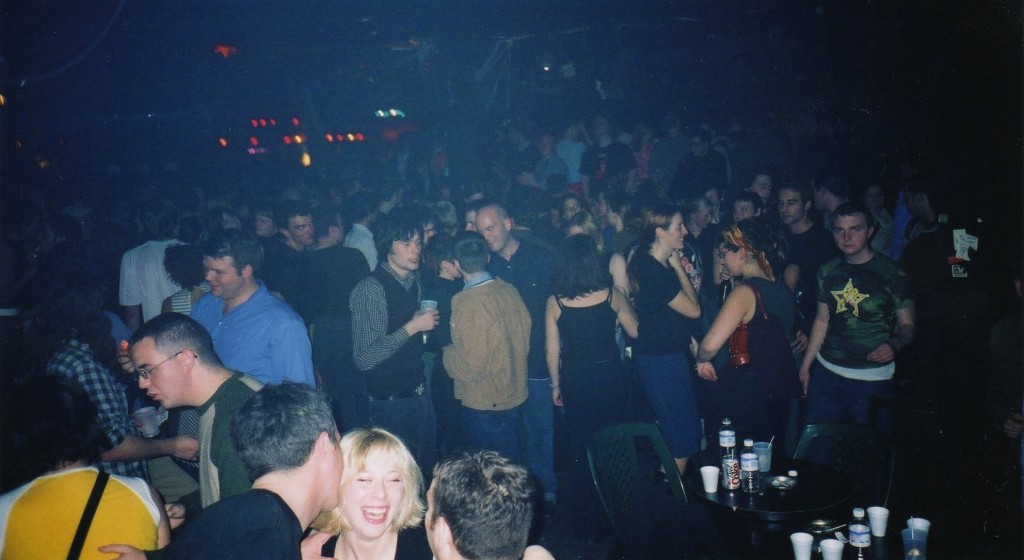
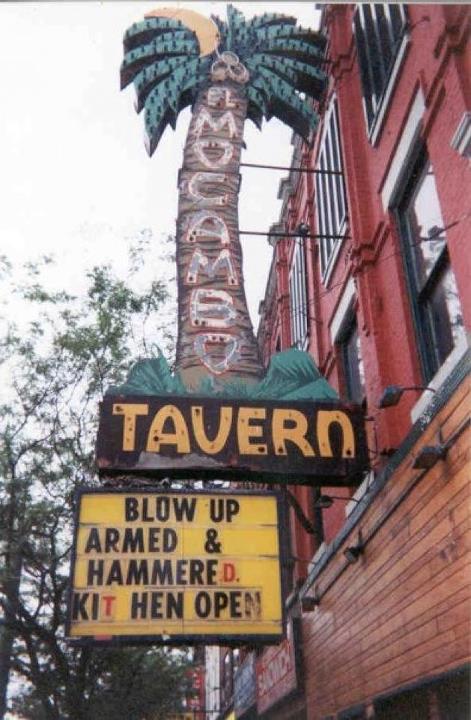
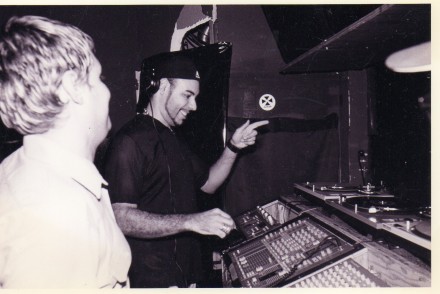
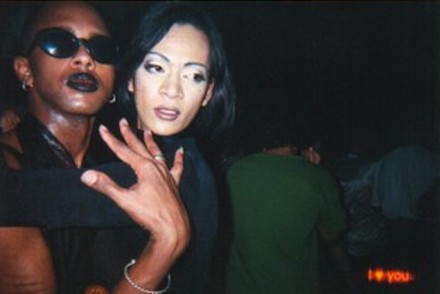
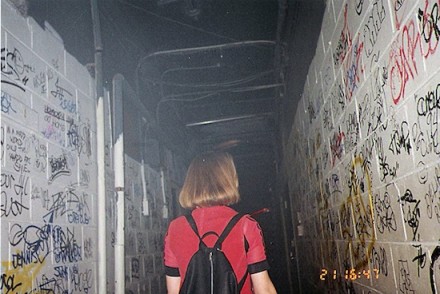

2 Comments
Food was delicious, as I had expected. We went with a party of 5 and tried 4
different types of burgers. The Mediterranean, Blue, Turducken and the Hells Kitchen burger.
Everyone loved the burger that they had ordered.
Drinks were replaced without asking. We tried the
Truffle Fries and onion rings and the sides were good
also. The reason for the 4 star was because they forgot about
the appetizer we ordered, so we were not able to try the burnt ends.
I’d still go back.
All comments in the string below have been republished from their original appearance on The Grid website. We’re including the readers’ comments as they add to these Then & Now stories. We look forward to reading new comments here as well.
Tom Ancaster
Often, there are multiple reasons for the failings of a club. The El Mocambo under my tenure was no exception. From September 1991 to January 1995, I know exactly what happened. I was there every day, always clean and much too sober. Ultimately, the club failed because it was unsustainable–with or without Jeff Cohen’s mostly successful bookings, and later with or without William New and Elvis Mondays. The El Mo upstairs was a big shoe to fill on weekends despite ambitious inhouse bookings by Jeff, William, and myself, and sporadic meaty bones thrown our way by MCA, CPI, and The Garys. With the guaranteed exception of Elvis Mondays, the first floor could easily–and often–be dismal. Spadina & College simply had next-to-zero walk-in traffic; Queen Street West was king. Local bands playing the downstairs lived or died by who they drew. In the end, the club’s principals simply had neither the money nor appetite to eat any losses. Insurance lapsed, utility bills went astray, landlords were left wanting. But I take pride that bands and staff were paid unfailingly. From day one, Jeff Cohen wore two hats at the El Mo. First, he was on contract as an inhouse talent booker. Second, he brought in talent as an independent promoter. Jeff was hired because he had talent and he had his own money to burn to buy some very fine acts. The slight majority of those acts turned good coin for both Jeff and the club, but the hungry day-to-day dogs of business soon ate the winnings. As for Jeff Cohen’s claim he was fired by me, it is patently false. The fact is, Jeff quit as the El Mo’s talent booker, then wasted no time filing a Statement of Claim against the club for “constructive dismissal.” After the club filed a defence, Jeff and his lawyer threw in their wet towel. Although certainly I have spun my own tangled webs (always borne out of financial survival, I swear), so too did Jeff Cohen spin. “Saffire – The Uppity Blues Women,” a show Jeff independently promoted in 1993, comes to mind. After a spirited yet money-losing show, Jeff docked the band for income taxes, then claimed a week later to their pleading & protesting manager that he had already paid same to the El Mo, when in fact he hadn’t. The club had no such arrangement with Jeff for taxes. Talent he promoted (such as Saffire) was his entire responsibility. The Elmo supplied only the venue. As for Enzo Petrungaro & Company and their claims of widespread if not quite grandiose renovations: Where was the central air conditioning? And if all were so swell–”glory days” as is written–why did they lose so swiftly to the landlords before I ventured along? My guess: A few too many failed shows, and too small an audience for those they booked. We hosted much the same talent as Petrungaro–big and small–and much, much more, for three-and-a-half years, and yet the club was unsustainable still. The El Mocambo has never been a ticket to print money, and it’s always been a whack of work. It’s a grey, old elephant. But there was some fun hopping on for a ride. And this article brings back some fond and furious memories of that ride. 2:49 pm on November 26, 2012
david
Great article as per usual, just want to mention that it was the Cult who were the last international act to perform in the El Mo in 2001, they wanted to play and did on the monday evening on oct 29, 2001 as they had heard it was being converted into a dance studio and closing down.They just so happen to be in town and were opening up for aerosmith who had postponed their gig at the acc due to one of their members being ill. astbury was very aware of the club’s history having lived in Hamilton in his pre-Southern dealth cult days. He said to the crowd; “What’s it been? 50 years at the El Mo? Child, boy, man. David Johansen has played on this stage. What about Forgotten Rebels?,” he said, referring to the Hamilton punk icons known for the song “Surfin’ On Heroin.” I was at the El Mo 2 days earlier to see Momus and Stereo Total. for me seeing Momus for the first time was monumental. You must have been there too i would think  2:19 am on August 21, 2012
Michael Ikeda
Nice article Denise! I am happy to see Enzo mention the Gonzalo Rubalcaba show that I produced on May 11, 1991. It really was a super show. Because Gonzalo was Cuban, he was not permitted to record or play in the USA. I got a call from Charlie Haden asking me to produce the concert. I hadn’t even heard of Gonzalo at that time but Charlie assured me he was great. I was also encouraged that Jack DeJohnette would be the drummer. The trio were in Toronto to record an album for Blue Note. They had to put it under their Japanese label, Somethin Else for EMI. Kazunori Sugyama came up from New York to produce the CD at McClear Studio. The media came to Toronto from all over. Downbeat Magazine and BET Television plus all the local media. Enzo was a gracious and wonderful man to work with. I hope the new Elmo will have many great shows to come! Michael Ikeda 10:59 am on August 15, 2012
Better Life
I reflect fondly on the El Mo…i was proposed to there..was a great venue to watch alot of local bands…hopefully, the El Mo will last longer than the engagement ;o) 10:26 am on August 15, 2012
Jason Paris
Some great audible El Mo stories (including one of my own) can be found on this page… http://murmurtoronto.ca/place.php?239613 4:54 pm on August 14, 2012
Die J!
Mars Another great article Denise! Like the Sinisters clip too. My band, The Millionaires, opened up for them that Halloween and it was my introduction to them. I didn’t know what was coming as it took me an hour to syphon through broken bottles and junk onstage afterwards to try and find my guitar peddles. They literally tore the house down (and I guess always do!).  2:40 pm on August 13, 2012
Mike
A great read, thank you! 11:51 am on August 13, 2012